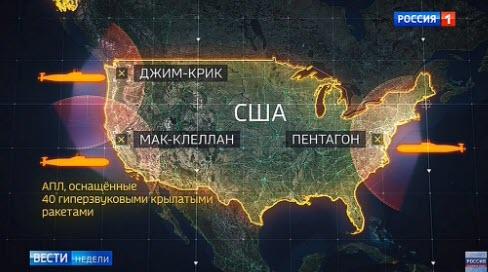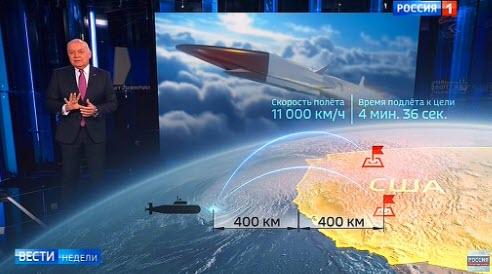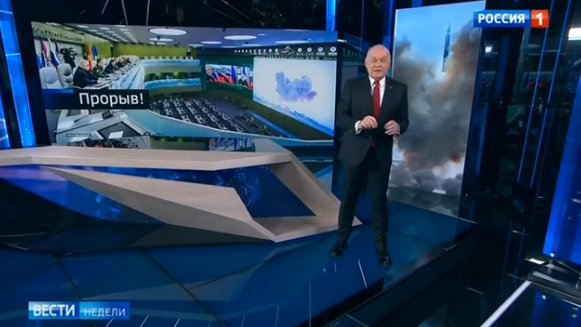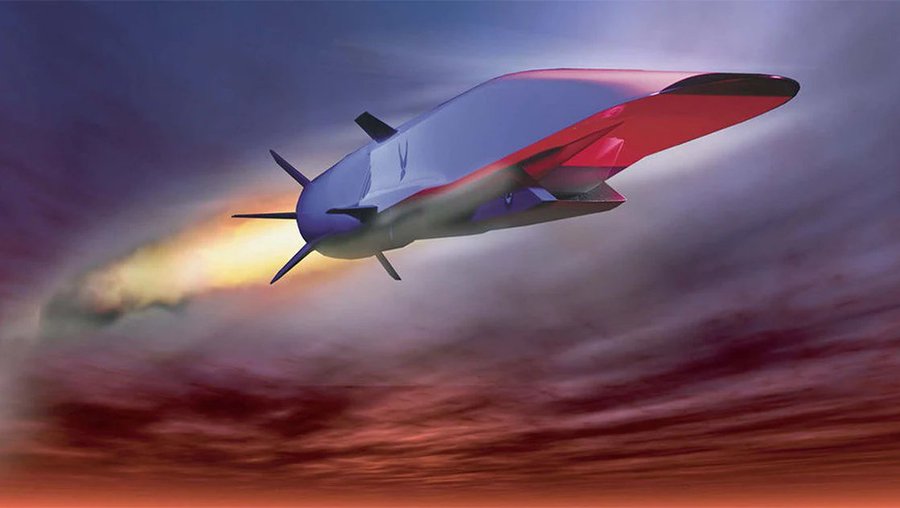Russian TV Lists Nuclear Targets In The US
"For Now, We’re Not Threatening Anyone": Russian TV Lists Nuclear Targets In The US
With US-Russia relations deteriorating rapidly in the aftermath of the collapse of the INF nuclear arms treaty, which prompted Russia's Vladimir Putin to slam the US for "demolishing" global security, Russian state television listed U.S. military facilities that Moscow would target in the event of a nuclear strike, in a report which Reuters said "was unusual even by its own bellicose standards" and said that a hypersonic missile Russia is developing would be able to hit them in less than five minutes. The targets included the Pentagon, Forth Ritchie and the presidential retreat in Camp David, Maryland. A hypersonic missile Russia is developing would be able to hit them in less than five minutes, it said.
The report was broadcast on Sunday evening, days after President Vladimir Putin said Moscow was militarily ready for a “Cuban Missile”-style crisis if the United States wanted one.
In the Sunday evening broadcast, Dmitry Kiselyov, presenter of Russia’s main weekly TV news show ‘Vesti Nedeli’, showed a map of the United States and identified several targets he said Moscow would want to hit in the event of a nuclear war. The targets, which Kiselyov described as U.S. presidential or military command centers, also included Fort Ritchie, a military training center in Maryland closed in 1998, McClellan, a U.S. Air Force base in California closed in 2001, and Jim Creek, a naval communications base in Washington state.
Kiselyov, who is close to the Kremlin, said the “Tsirkon” (‘Zircon’) hypersonic missile - which reportedly can travel at five times the speed of sound - that Russia is developing could hit the targets in less than five minutes if launched from Russian submarines.
“For now, we’re not threatening anyone, but if such a deployment takes place, our response will be instant,” he said.
As Reuters notes, Kiselyov is one of the main conduits of state television’s strongly anti-American tone, once saying Moscow could turn the United States into radioactive ash. Asked to comment on Kiselyov’s report, the Kremlin said on Monday it did not interfere in state TV’s editorial policy.
In the aftermath of Trump's suspension of the Intermediate-Range Nuclear Forces Treaty (INF), and with tensions rising over Russian fears that the United States might deploy intermediate-range nuclear missiles in Europe as a Cold War-era arms-control treaty unravels, Putin has said Russia would be forced to respond by placing hypersonic nuclear missiles on submarines near U.S. waters.
In response, the United States says it has no immediate plans to deploy such missiles in Europe and has dismissed Putin’s warnings as disingenuous propaganda. While the US does not currently have ground-based intermediate-range nuclear missiles that it could place in Europe, the decision to quit the 1987 Treaty over an alleged Russian violation - something Moscow denies - has freed it to start developing and deploying such missiles.
Putin has said Russia does not want a new arms race, but has also dialled up his military rhetoric.
Some analysts have seen his approach as a tactic to try to re-engage the United States in talks about the strategic balance between the two powers, something Moscow has long pushed for. Meanwhile, the collapse of the INF has freed US-based neocon warmongers and defense companies to start preparing for the inevitable next (nuclear) arms race between the two nations. The only question is not if but when China decides to officially join.





Keine Kommentare:
Kommentar veröffentlichen